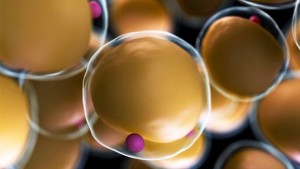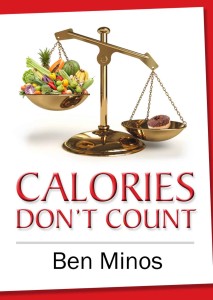TCC Science of Fat Loss Series Part 2 – How Fat is Stored

In part 2 of the series, we will look specifically at how exactly fat gets stored within your fat cell. Bear in mind, at this stage, we are looking at the specific biological events that occur and how they occur. It is not necessarily looking at the conditions they occur in. Although some will be touched upon here, the discussion of that will come in later parts of the series.
For the sake of understanding, some parts of the pathways that aren’t as important to our discussion will be simplified to avoid confusion.
Lipogenesis (meaning generating stored fat) occurs inside your fat cell. It can also occur in your liver, but we’re focusing just on the fat cell for now.
Fat is stored inside your fat cell as Triacylglycerol or TAG for short, which is 3 fatty acids handcuffed to a glycerol backbone. Whenever I mention TAG, just think the stored fat.
When you have “Free Fatty Acids”, or FFA, they are literally free to move in and out of your fat cell as they please. If, however, you get 3 FFA and handcuff them to a Glycerol backbone inside the fat cell, the whole complex is now too big to escape the fat cell and is “locked” inside as fat.
So remember:
– FFA = free fat, comes and goes as it pleases
– TAG = stored fat, 3 fatty acids locked to glycerol backbone.
Don’t let all the big science names scare you off. I’ll use acronyms for a lot of them, just like scientists often do. Mainly because the name itself isn’t important. Understanding the concept is.
What this means is the base ingredients you need for fat storage are:
1) 3 Free Fatty acids
+
2) Glycerol Backbone
Two questions then become important.
1.Where do these ingredients come from?
2.How do they get locked together?
1. Where do these ingredients come from?
Free Fatty Acids
The fat you eat:
The fat you eat and the fat you store are NOT the same thing. When you eat fat, it has to undergo digestion and then gets re-synthesised for transporation. Because fat and water don’t mix it has to get transported through the blood in a special coating of proteins. This coating doesn’t last long though, only about 8 hours. Depending on your energy demands at the time and a few other factors, the fat can then either 1) enter cells of your body to get used for energy, or 2) potentially get stored in your fat cells for later. Once inside your fat cell, they enter the free fatty acid pool. In this form they are “free” to come and go from the fat cell as they please.
The fat you make:
It may be a surprise to a few of you, but very little synthesis of FFA occurs inside your fat cells. FFA are mainly synthesised by your liver. If your carbohydrate intake exceeds your body’s energy needs at that time (and after your glycogen stores are saturated), glucose can be used for fatty acid synthesis in the liver.
So, in this way carbs that don’t need to be used at that point in time can be stored as glycogen in your muscles and liver. After these glycogen stores are topped up, any excess carbohydrates are converted to triglycerides primarily by the liver and transferred to your fat cells for storage.
Important point to remember!!
Fatty Acid Synthesis DOES NOT equal fat storage!!! You are just looking at putting this excess energy in to a “holding pattern” for the time being because you don’t need it right at that point.
It’s only when the fatty acids are transported and locked to the glycerol backbone inside your fat cell that it becomes stored fat.
Theoretically, any substrate – carbs, fats or proteins – can be converted to fatty acids, but the pathways and metabolic processes can be quite different and cumbersome for some more than others. We will cover some of these areas in a later series.
Glycerol Backbone
The glycerol backbone, as the name suggests, is only manufactured from glucose. So anything that works to transport glucose in to the fat cells will contribute to the accumulation of fat. And what is the main component responsible for driving glucose in to your cells? Insulin. What’s the main substrate that drives insulin release? Carbohydrates. There are a few amino acids (i.e. proteins) that can also elicit an insulin response. This will be discussed another time. Again, not making any inferences just yet here. Just describing the circumstances that take place.
Important reminder: At this stage of the process, having these ingredients does not mean it will be stored as fat in your fat cell. For that to happen you need to actually store it as TAG inside your fat cell.
2. How do they get locked together?
This is the most important question of all. How does your fat get stored as fat? What is actually responsible for locking the 3 FFA to the Glycerol backbone? Once you have got these ingredients, how do you actually lock these things together inside your fat cell?
The key lies in certain enzymes that exist inside your fat cell. Enzymes are like little ignition catalysts inside your cells. They kind of spark the chemical reactions in to life. The most important enzyme in this process is Lipoprotein Lipase. Or LPL for short.
In a nutshell, if you activate LPL, this will go around the cell and start handcuffing all the FFA it can find to glycerol backbones.
So, your fat doesn’t start getting fat until this step occurs. Activating LPL is the critical step in storing fat inside your fat cells. The key to figuring out fat storage then is figuring out what drives LPL activation.
This critical step is NOT under the control of substrates (or ingredients) though. The main triggers that fire LPL is in fact hormones. And insulin is the main hormone responsible for this process.
In this way, Insulin is actually the main regulator of your fat cell. It drives free fatty acids and glucose in to the fat cell. It also ignites the LPL hormone to start handcuffing the glycerol backbone to the FFA’s. Its net effect is to enhance fat storage AND block mobilisation (more on that in the next part).
To summarise here: The enzymes that control fat storage are under hormonal control. Not substrate control. Some substrates can affect certain hormones. The most obvious one is carbohydrates effect on insulin. The other hormones and circumstances that affect them will be covered in Part 7 and 8.
Just because you have excess substrate, it doesn’t necessarily mean it will get stored as fat inside your fat cell. Or in other words, just because you have all the ingredients doesn’t mean you’ve made it in to a cake.
You cannot, however, ever eliminate insulin completely. So thinking you can eat all the fat you want just because you’ve dropped some carbs out is also based on pseudoscientific half truth’s.
One final point before we wrap today:
One of the worst things about your fat cells is your bodies ability to store fat is limitless. The is a limited amount of carbohydrates your body can store. It has no efficient form of stored protein (besides what is structural and what is in the “free amino acid” pool). There’s theoretically no limit as to how much you can store. Beyond your mortality any way. Literally EVERYONE has the capacity to become obese. Isn’t that a pleasant thought to sign off with…
Take home points:
– The ingredients needed to store fat are 3 fatty acids and a glycerol backbone. These can come from your diet or be manufactured by your body
– Fat is stored as TAG inside a fat cell only when 3 fatty acids are locked to a glycerol backbone
– Lipoprotein Lipase is the enzyme that acts as a catalyst for this reaction to take place
– Substrates are not directly responsible for driving this reaction. Hormones are responsible for activating the LPL enzyme
– The main regulating hormone is insulin. It is not the only hormone. But it is definitely the most powerful one.
Questions you should start thinking about are:
What would happen if you didn’t supply as many ingredients? ie decreased your “calories” so to speak
What would happen if you had less carbs?
What would happen if you still had some insulin response but less carbs available to make anything out of?
We’ll explore these circumstances and how they take place another day.
Coming up in Part 3: How Your Body Loses Fat
 Ben Minos has Bachelor degrees in both Physiotherapy and Exercise Science (Human Movements). He has worked as a Personal Trainer for 20 years and a Physiotherapist for close to 15. Ben has authored a book on nutrition titled
Ben Minos has Bachelor degrees in both Physiotherapy and Exercise Science (Human Movements). He has worked as a Personal Trainer for 20 years and a Physiotherapist for close to 15. Ben has authored a book on nutrition titled